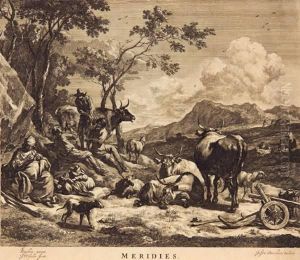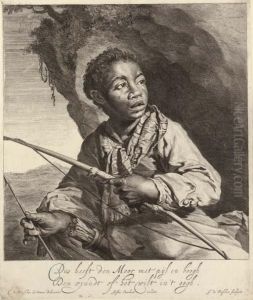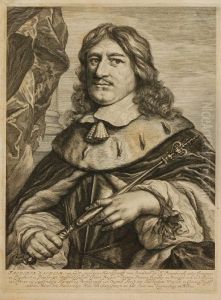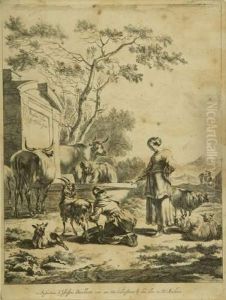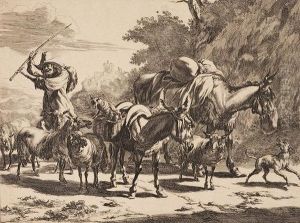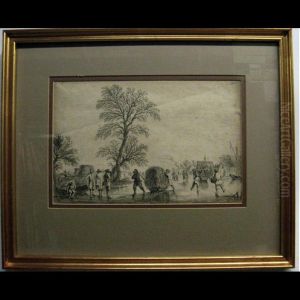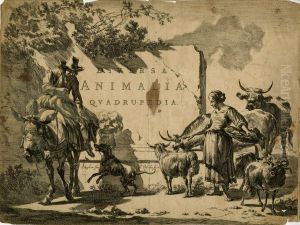Jan De Visscher Paintings
Jan de Visscher was born in 1636 in Amsterdam, Netherlands, into an era that is often considered the Golden Age of Dutch art. This period was marked by an extraordinary outpouring of artistic talent, including painting, printmaking, and drawing, with artists such as Rembrandt and Vermeer leading the way. Jan de Visscher, though not as widely known as some of his contemporaries, was a significant figure within this vibrant artistic milieu, primarily recognized for his skill as an engraver and draftsman.
The Visscher family was involved in the arts, with Jan's brother Cornelis de Visscher also gaining recognition as an engraver. Jan de Visscher's works often depicted landscapes, religious, and genre scenes, showcasing his meticulous attention to detail and his ability to capture the texture and light of his subjects. His engravings served not only as artworks in their own right but also as a means of disseminating the works of other artists, thereby playing a crucial role in the art ecosystem of his time.
Throughout his career, Jan de Visscher collaborated with several notable artists of his period, translating their paintings into engravings that could be more widely distributed and sold. This practice was common in the 17th century and helped to enhance the reputations of painters and engravers alike. De Visscher's engravings are characterized by their delicate lines and detailed rendering, qualities that made his work sought after by collectors and art lovers.
De Visscher's contribution to the Dutch Golden Age of art, though perhaps less celebrated than that of the era's most famous painters, was nonetheless significant. Through his engravings, he helped to preserve and propagate the visual culture of his time, leaving behind a legacy that continues to be appreciated by art historians and enthusiasts. Jan de Visscher died in 1692, but his work remains a testament to the rich artistic tradition of the Netherlands in the 17th century.
